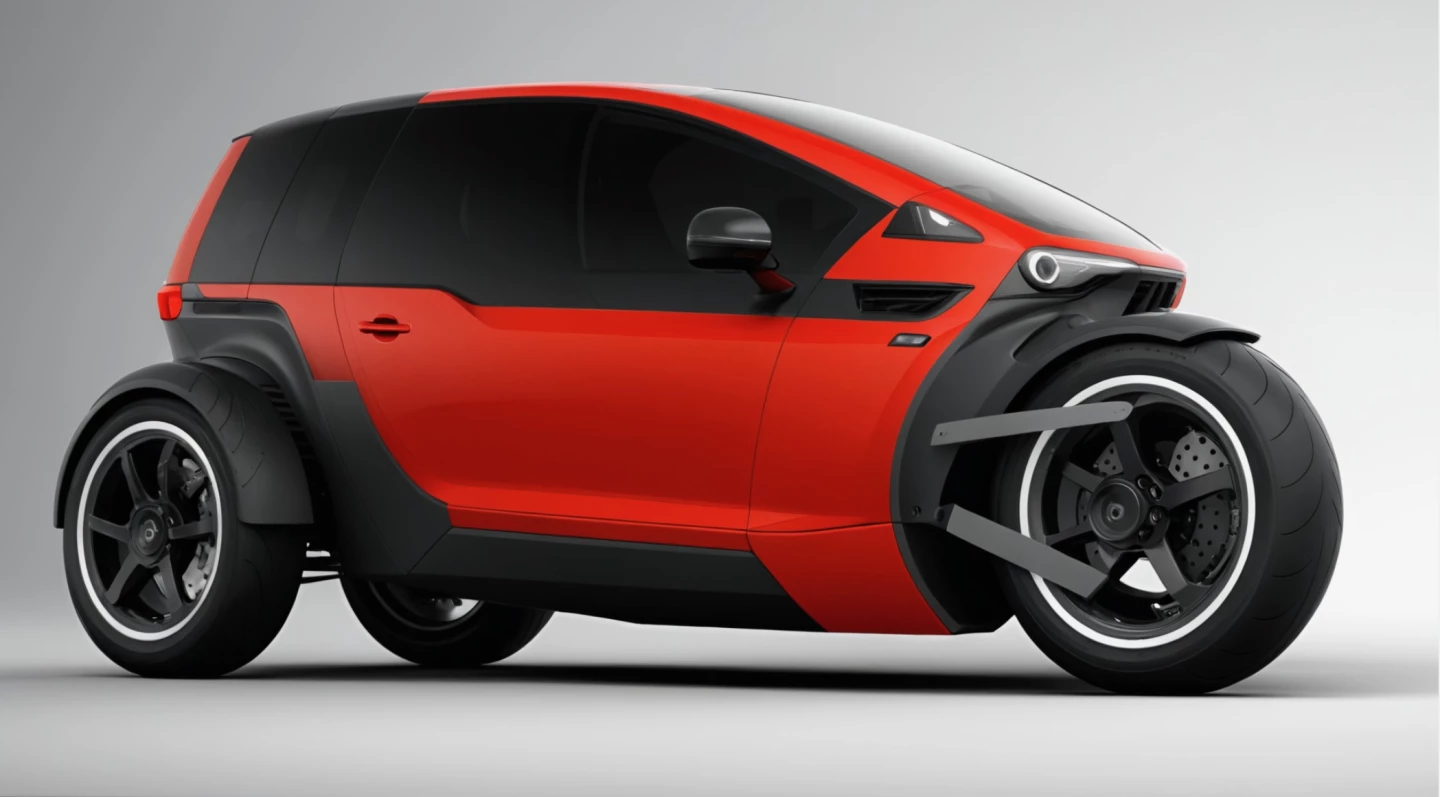Perhaps you like the idea of threading your way through traffic on a nimble electric motorbike, but don't like the thought of being unprotected or balancing on two wheels. If so, then the Trinova may be the fully-enclosed, tilting three-wheeled EV you've been dreaming of.
Currently in functional prototype form, the Trinova is being developed by California-based mechanical engineer and vehicle designer Markus Scholten. And he's certainly no slouch.
When still living in his birth country of Germany, Scholten worked for companies like BMW and Karmann GmbH. At the latter firm, he was the Engineering Manager on projects for clients such as Audi, Mercedes-Benz, and Porsche.
Upon moving to the US, he led development of the chassis and convertible roof system for the Fisker Karma Sunset. When Fisker Automotive closed its doors in 2012, he began seeking other opportunities.
"I went to an interview at Tesla. The drive there took just 30 minutes, but the drive home on the 405 [highway] was bumper-to-bumper for over two hours," he tells us. "When I got home, my wife asked how it went. I told her that if I got the job, I’d need to buy a motorcycle. She replied, 'Then you’re not getting the job … but maybe it’s time you build that three-wheeled vehicle you’ve been sketching since you saw GM’s Lean Machine back in 1982.'"

The resulting vehicle does indeed superficially resemble General Motors' classic tilting concept, along with the existing Carver three-wheeler.
Its fully enclosed cabin accommodates two people, one in front of the other, allowing it to maintain a narrow width of about 850 mm (33.5 in). Additionally, an "intelligent balance system" lets the two rear wheels tilt along with the vehicle's main body when taking corners, boosting performance and stability. That system automatically brings the Trinova back upright when coming to a stop.
Because the vehicle is so narrow, and because it would be classed as a motorcycle in most markets, Scholten envisions it being used to beat traffic congestion via lane-splitting (traveling between lanes of slow-moving or stopped traffic moving in the same direction). Or at least, it could do so in regions where lane-splitting is legal.

The Trinova's compact footprint would also allow it to be parked in spots too small for traditional automobiles. Its electric drivetrain, meanwhile, would replace fuel costs with much cheaper charging fees, reduce maintenance requirements, and eliminate tailpipe greenhouse gas emissions.
Scholten has already built three functional proof-of-concept prototypes, two of which utilized ZF75/7 electric drivetrains made by Zero Motorcycles, and one of which sported an Aprilia RSV 1000R combustion engine. He tells us that a combustion model of the Trinova may be offered for customers who want it. This article is continued below the following demo video.
Plans call for the production version of the primary electric model to be equipped with two hub motors – one in each rear wheel – which will take it from 0 to 60 mph (97 km/h) in 3.5 seconds. It will have a top speed of over 120 mph (193 km/h).
One charge of the 10- to 12-kWh lithium battery pack should be good for a range of 100 to 140 miles (161 to 225 km), depending on usage. The whole vehicle ought to tip the scales at about 750 lb (340 kg).

Following an unfortunate experience with a previous development partner, Scholten and his team are now planning on launching a WeFunder campaign to finance production of an initial batch of Trinovas. Prospective buyers and/or investors can contact him via the company website.
If the crowdfunding project is successful, it is hoped that pricing for the vehicle should ultimately be in the range of US$18,000 to $22,000.
"Every time I sit in traffic, I remind myself that there’s 'this engineer' I know pretty well that has this really cool commuter he invented … and he’s told me that he is not done yet," says Scholten.
Source: Trinova








